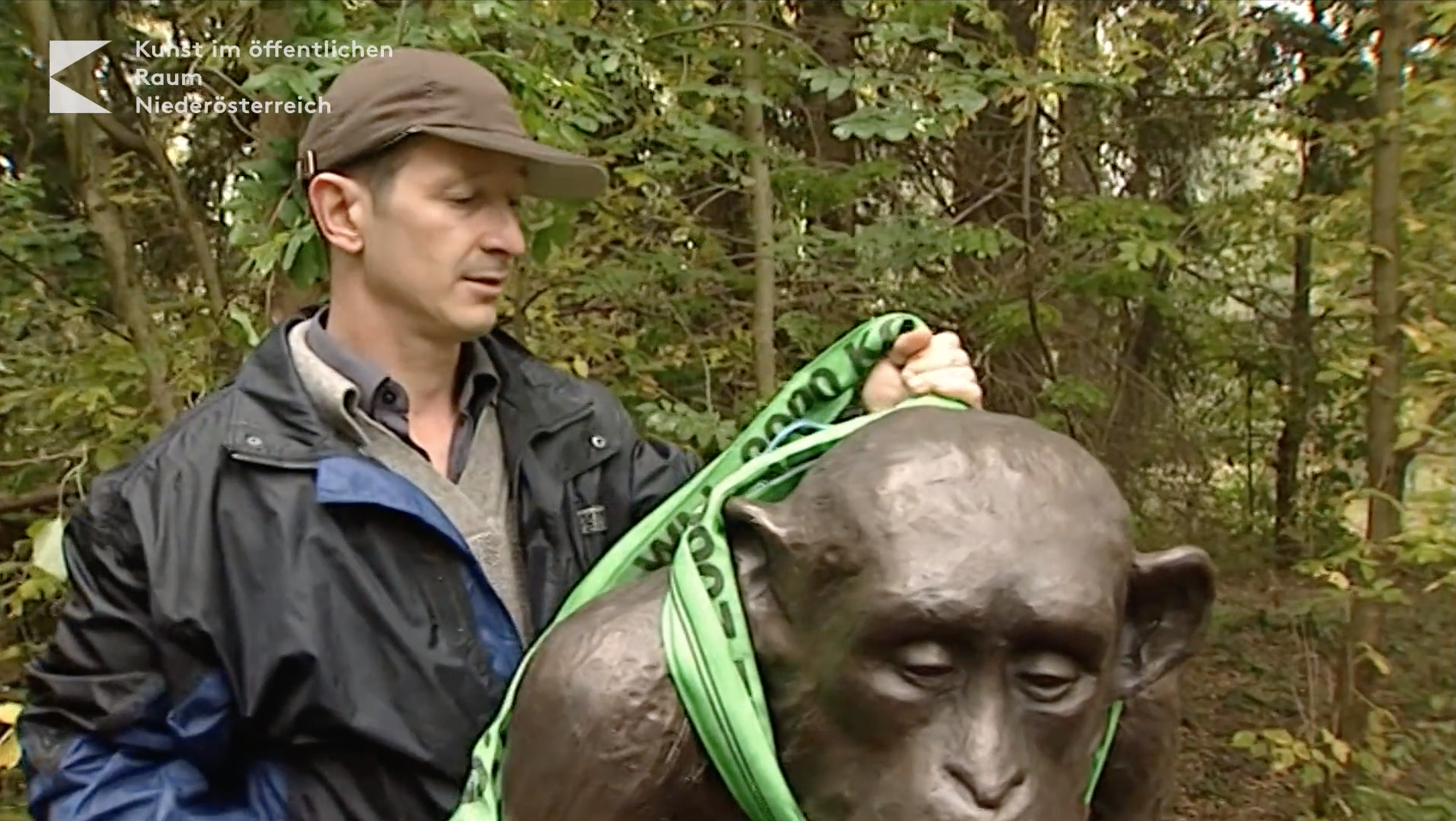Klaus Weber
:
Coverversion
Back
Information
A monkey is sitting on a pile of books in the Tullner Auwald and gazing at a human skull. A circle and a light bulb supplement the arrangement. The sculpture by the conceptual artist entitled Coverversion is a replica of the miniature sculpture "Affe mit Schädel" (Monkey with Skull) by the sculptor Hugo Rheinhold from 1893.
Far out there, in a clearing in the riparian woodlands, a monkey squats on a stack of books and observes a human death’s head. A compass and a light bulb complete the arrangement, all of which sits on a concrete slab. This installation is a 'cover version' of the miniature sculpture by the Berlin-based artist Hugo Rheinhold, a 'moderately talented' sculptor who scored his (only) sensational success with 'Monkey in Skull' at the Great Berlin Art Exhibition of 1893. Endless replicas soon found their places on desks, and even Lenin received the associatively laden miniature as a gift from the American industrialist Armand Hammer. Klaus Weber, a native of Berlin, is well aware of the fact that the concrete slab is placed on sand. He is a multifaceted concept artist and a laboratory scientist who can boast an oeuvre of notable subversion, an oeuvre which is based on various seemingly harmless experimental procedures. The field of questions upon which Weber draws is the field of hypothesis. It ranges from faked demonstrations and pranks on policemen to mushroom cultures ('Sidewalk Mushrooms') and from greenhouses for consciousness-expanding plants to works featuring the effective mechanisms of drugs ('Public Fountain LSD Hall') and acoustic loops on the basis of urban sounds.
The philosophizing monkey is a motif of the 19th century and refers to Charles Darwin’s theory that humankind is descended from primates. These days, various fundamentalists are once again having a field day disputing this theory, and Klaus Weber’s sculpture in the wetland forest near Tulln will hopefully, according to the artist, be understood as criticism of our anthropocentric world—and offer space to ponder: who are we, and what exactly is our relationship to nature and the world?
(Brigitte Huck)
Images (6)









